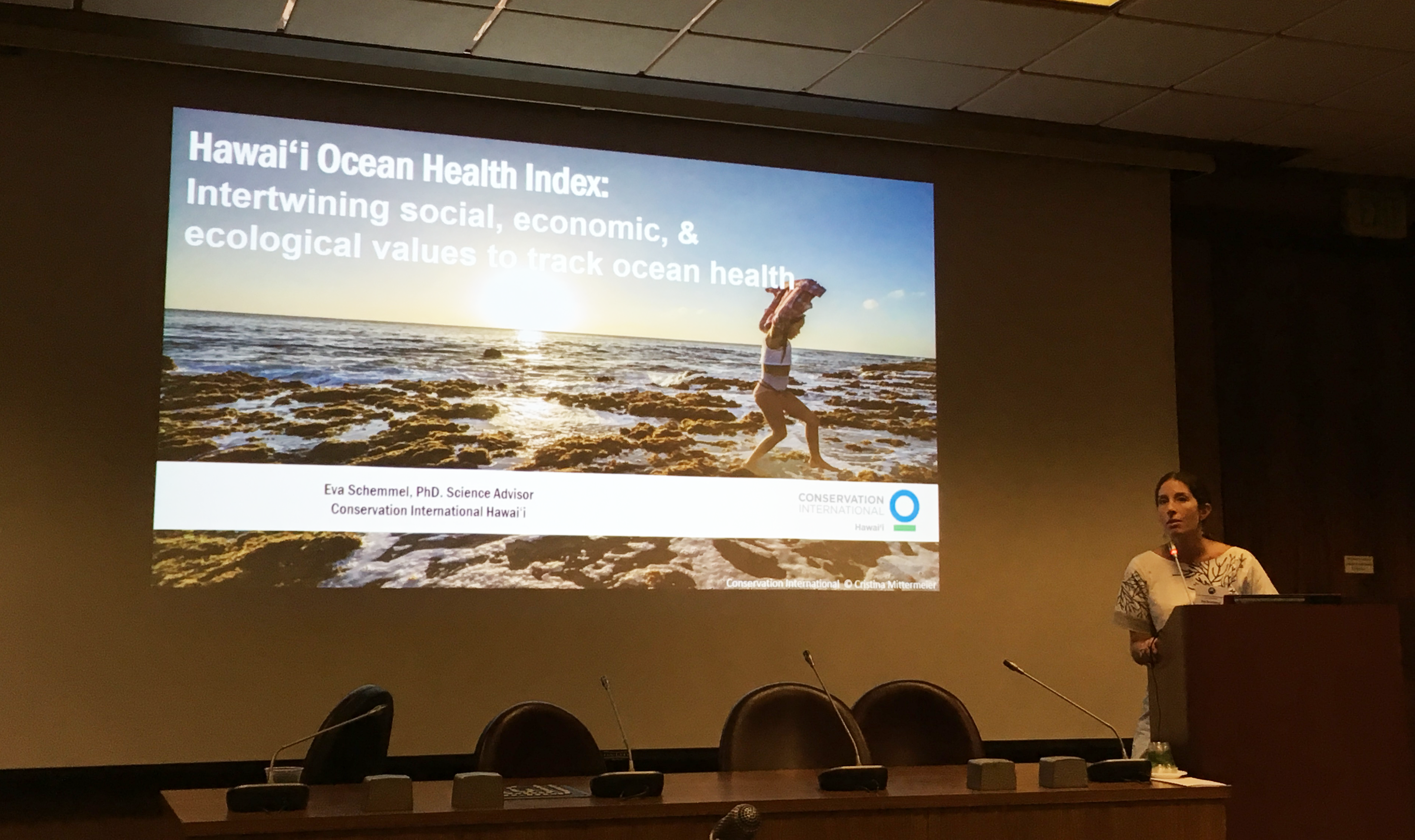Hawaiʻi Ocean Health Index sneak preview
by Erin O'Reilly
Last week, Eva Schemmel, the lead of our Hawaiʻi Ocean Health Index (OHI) assessment, presented a sneak peek of the assessment’s results at the 7th International Conference on Environmental Future in Honolulu, HI. This conference sought to advance global and multi-disciplinary conversations around environmental futures, with a specific focus on humans and island environments.

Eva Schemmel presenting at the International Conference on Environmental Future in Honolulu, HI.
In a talk titled Intertwining social, economic, and ecological values to track ocean health, Eva wove together a story of Hawaii’s past with a look towards a sustainable future.
Hawaiians and other Pacific Island nations have a long history of sustainable resource use, recognizing their well-being and health relied on the status or availability of natural resources. Today, the same is true; the health of our island communities and environment is intertwined.
This strong sense of place and mālama ʻāina (care for the land and ocean) drives community conservation in Hawaiʻi and is a model for the rest of the world. These social and cultural values are the foundation for the development of the Hawaiʻi Ocean Health Index.
For this index to be truly representative of Hawaiʻi, it had to be tailored and modified from the global assessment. By engaging with a diverse group of stakeholders – community members, non-profit groups, private industries, and state and federal agencies – Eva was able to piece together local priorities to develop indicators for ocean health in Hawaiʻi.

Photo Credit: Troy K. Shinn
The Hawaiʻi OHI tracks the benefits our oceans provide Hawaiʻi now and into the future by measuring the status of six goals: food provision, coastal protection, biodiversity, livelihoods & economies, sustainable tourism, and sense of place. These goals integrate community values, disparate data sets, management priorities, and ecosystem indicators, representing a more complete assessment of the benefits our ocean provides the people of Hawai’i.
Not only does the Index incorporate local knowledge and data, it is also being used to track broader sustainability goals. The Hawaiʻi OHI is part of the Aloha+ Challenge: Hawaii’s statewide commitment to achieve six integrated sustainability goals by 2030 for clean energy, local food, natural resource management, solid waste, smart sustainable communities, and green education and workforce. Progress on these goals can be viewed on the Aloha+ Challenge Dashboard.
The Hawaiʻi OHI will be used to track progress towards achieving these sustainability goals and provides an all-encompassing indicator that can be referred to for policy or metric development. Integrating social, ecological, and economic values into one index enables communities, local businesses, managers, policy makers, and scientists to more holistically understand, track, and communicate the status of our ocean resources and creates a shared vision for the future of our oceans.
Keep a lookout for the official rollout of the Hawaiʻi OHI assessment, slated to come out June 2018.
